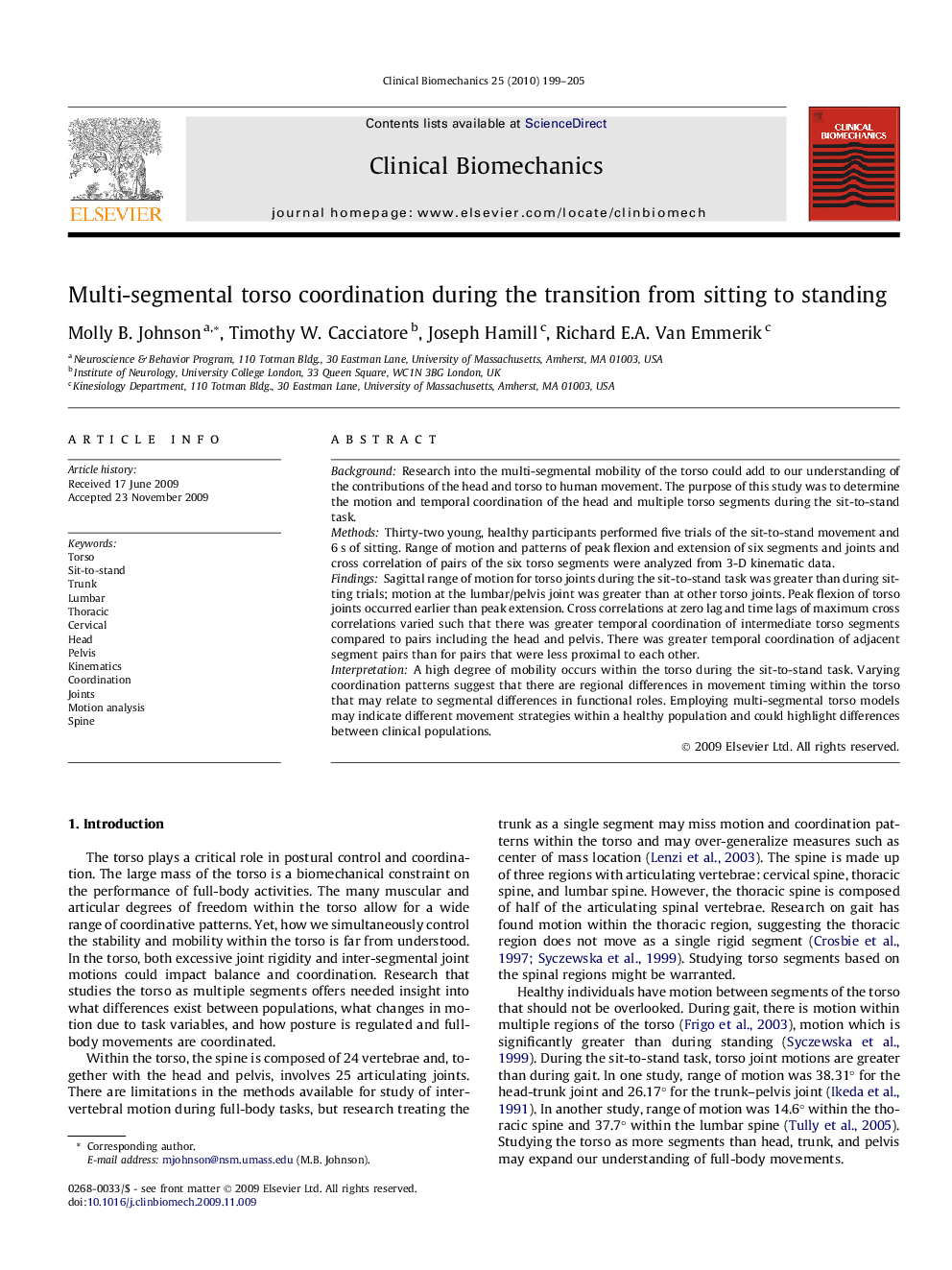| Article ID | Journal | Published Year | Pages | File Type |
|---|---|---|---|---|
| 4051110 | Clinical Biomechanics | 2010 | 7 Pages |
BackgroundResearch into the multi-segmental mobility of the torso could add to our understanding of the contributions of the head and torso to human movement. The purpose of this study was to determine the motion and temporal coordination of the head and multiple torso segments during the sit-to-stand task.MethodsThirty-two young, healthy participants performed five trials of the sit-to-stand movement and 6 s of sitting. Range of motion and patterns of peak flexion and extension of six segments and joints and cross correlation of pairs of the six torso segments were analyzed from 3-D kinematic data.FindingsSagittal range of motion for torso joints during the sit-to-stand task was greater than during sitting trials; motion at the lumbar/pelvis joint was greater than at other torso joints. Peak flexion of torso joints occurred earlier than peak extension. Cross correlations at zero lag and time lags of maximum cross correlations varied such that there was greater temporal coordination of intermediate torso segments compared to pairs including the head and pelvis. There was greater temporal coordination of adjacent segment pairs than for pairs that were less proximal to each other.InterpretationA high degree of mobility occurs within the torso during the sit-to-stand task. Varying coordination patterns suggest that there are regional differences in movement timing within the torso that may relate to segmental differences in functional roles. Employing multi-segmental torso models may indicate different movement strategies within a healthy population and could highlight differences between clinical populations.
